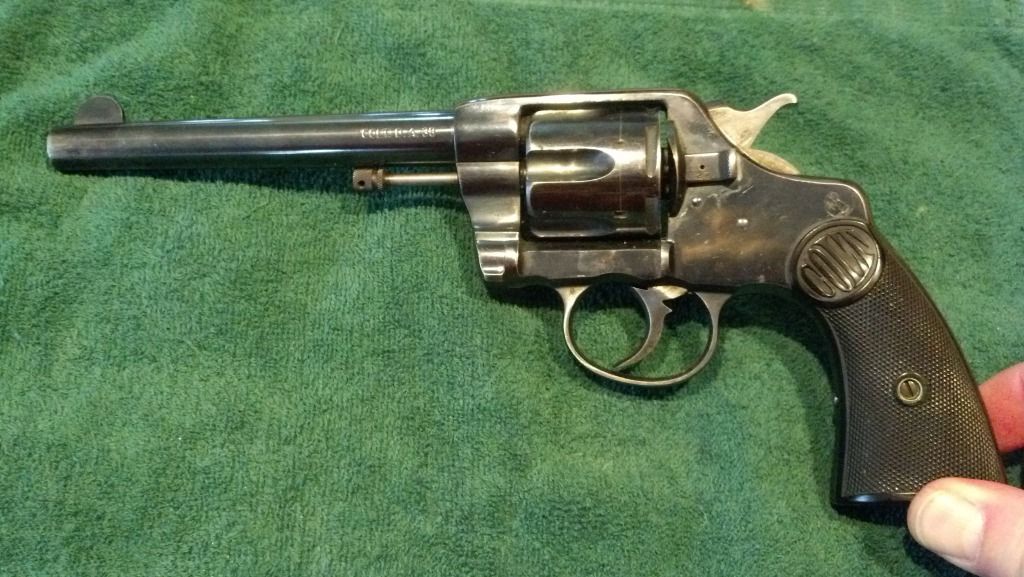mark clausen
New member
A friend of mine asked me to research this revolver for him. I believe it is a Colt New Army and Navy. Patent dates are 1884, 1888, and 1895. Serial # on the butt is 2434xx. I have a couple antique firearms books, one is old and the newer one doesn't describe civilian models which this obviously is since it has no martial stamps of any kind. I think this was made in 1905, am I correct? Could anyone give me a ballpark value? He isn't going to sell it, it came from his great uncle through his dad and is going to one of his sons. My friend asked me to research the gun, not find out it's value, but I am very curious. I have a 1990 Flayderman's book that lists it for $275 in excellent cond. I realize how long ago that is and the gun isn't in excellent condition, but it is in very good condition. Any help would be appreciated. Here is a fairly representational pic of the gun.


